News
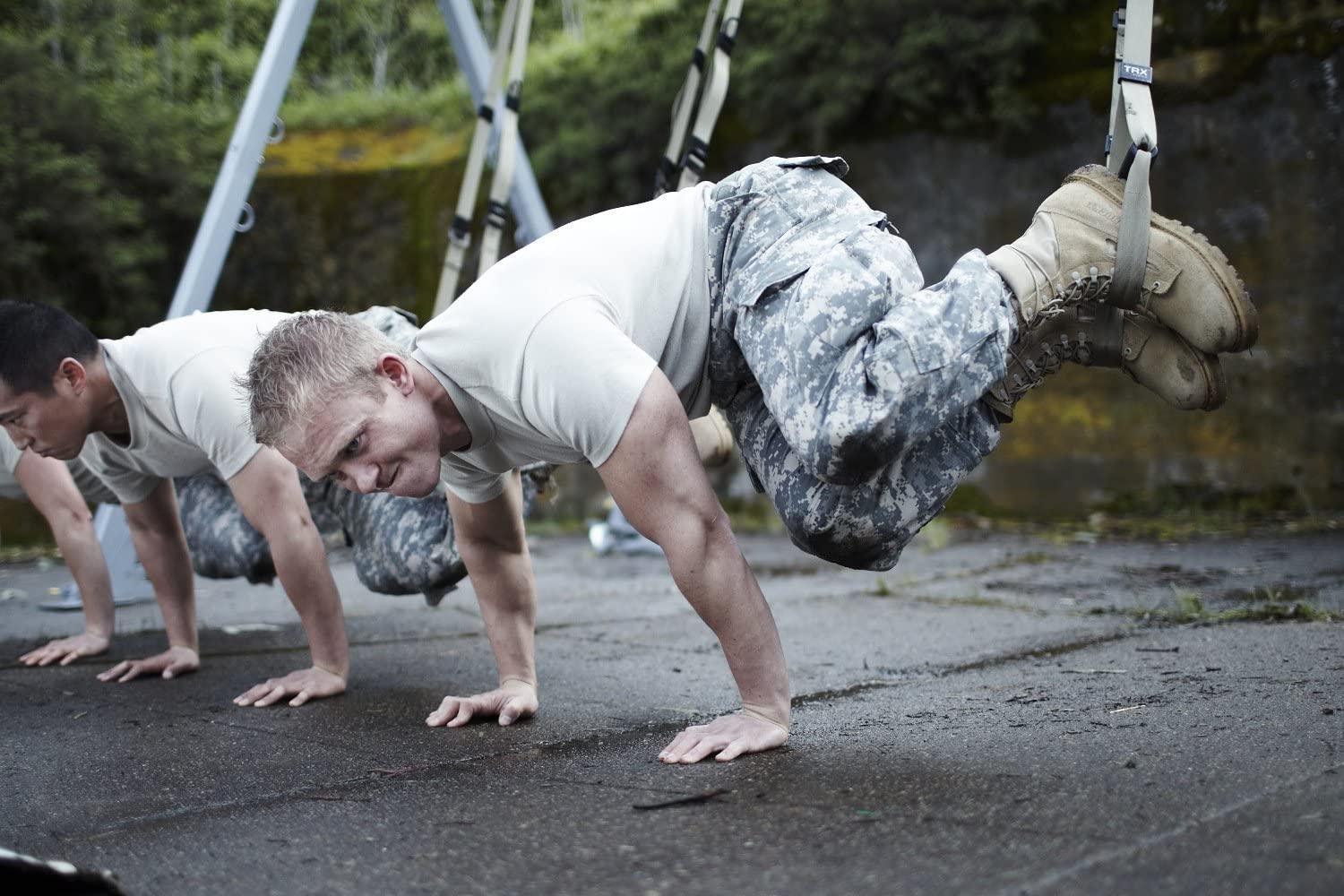
TRX Tactical Conditioning Program Overview: Military Fitness
From concept to prototype to design to creation, it took a small army of TRX employees many months to yield the latest evolution of our flagship product: The brand new TRX FORCE Kit: Tactical (released on 11/11/11). Want to find the perfect tactical training program for your fitness level? Take our quick assessment quiz to get a customized workout plan based on military conditioning principles. In addition to the physical improvements made to the Tactical Suspension Trainer making it lighter and more durable, it's the new Tactical Conditioning Program that is the star of the show.
TAKE OUR TRAINING QUIZ
The 12 week progressive program is broken down into three distinct phases that progressively build on one another. Each phase is four weeks long and includes four workouts per week.
Phase 1 focuses on building a solid, stable core, thus increasing the power in your shoulders, arms, hips and legs.
Phase 2 focuses on arm and leg strength while maintaining core strength developed in Phase 1.
Phase 3 adds a high intensity interval training component to the movements while emphasizing speed and power.
With a consistent, easy-to-follow daily format, the program places extra emphasis on developing joint mobility so that your body can take the kind of beating that a tactical athlete does and still perform at your peak over long periods. In the video above, TRX Head of Human Performance Chris Frankel describes the logic and design of the program phase-by-phase in this short orientation video that comes on the first of two DVDs included in the Guide.
All 70+ exercises in the program, and their associated progressions, are demonstrated in the massive exercise library in the program DVD and highlighted in the pull-out exercise maps.
The fact that the TRX FORCE Tactical Conditioning Program maps so directly to the demands of military service is partly attributable to all of the feedback that we collected from users in the field over the past two years and partly attributably to the bi-directional relationship that we have developed with the military and first responder training communities. Illustrating that second piece is a gathering that Frankel was invited to this past March at the Army’s School of Physical Fitness at Ft. Jackson, South Carolina.
It was a three-day meeting-of-the-minds that included exercise scientists, drill sergeants and fitness experts from all branches of the military. The goal of the meeting was to evolve the Army’s legacy Physical Readiness Test and training protocol to match the demands of today’s military service and take advantage of the latest research in exercise science. “We were brainstorming and breaking out into focus groups to talk about what was going to work and what wasn’t,” recounts Frankel. “They’re adopting a lot more traditional strength and conditioning stuff but also a lot of functional training that’s bodyweight and calisthenics based. My role was mainly to be a sounding board for ideas.”
If you don't have a suspension trainer, pick one up today.
TRX® PRO4 SYSTEM
BUY NOW
TRX® HOME2 SYSTEM
BUY NOW
TRX® TACTICAL GYM
BUY NOW
Buy your TRX FORCE Kit: Tactical Conditioning Program here.
UPDATE: In 2013, TRX launched the TRX Force Super App, the ultra-enhanced, digital 12-week Tactical Conditioning Program accessible anywhere on your Smartphone. The Super App comes with the TRX FORCE Kit: Tactical, or you can purchase it on its own here.

TRX T Deltoid Fly
This exercise targets the posterior fibres of the deltoids as well as musculature of upper back, shown here with Fraser Quelch and TRX Founder and CEO Randy Hetrick.
Fraser Quelch is Director of Training and Development for TRX. He is also a featured fitness author and a competitive Ironman triathlete.

TRX Swimmers Pull Exercise
This TRX exercise is clutch for developing shoulder, back, and core strength. Want to find the perfect TRX exercises for your fitness level? Take our quick assessment quiz to get a personalized training plan. As well as providing an excellent foundation for other functional movements you'll use in sport, and in life.
TAKE OUR TRAINING QUIZ
Fraser Quelch is Director of Training and Development for TRX. He is also a featured fitness author and a competitive ironman triathlete.
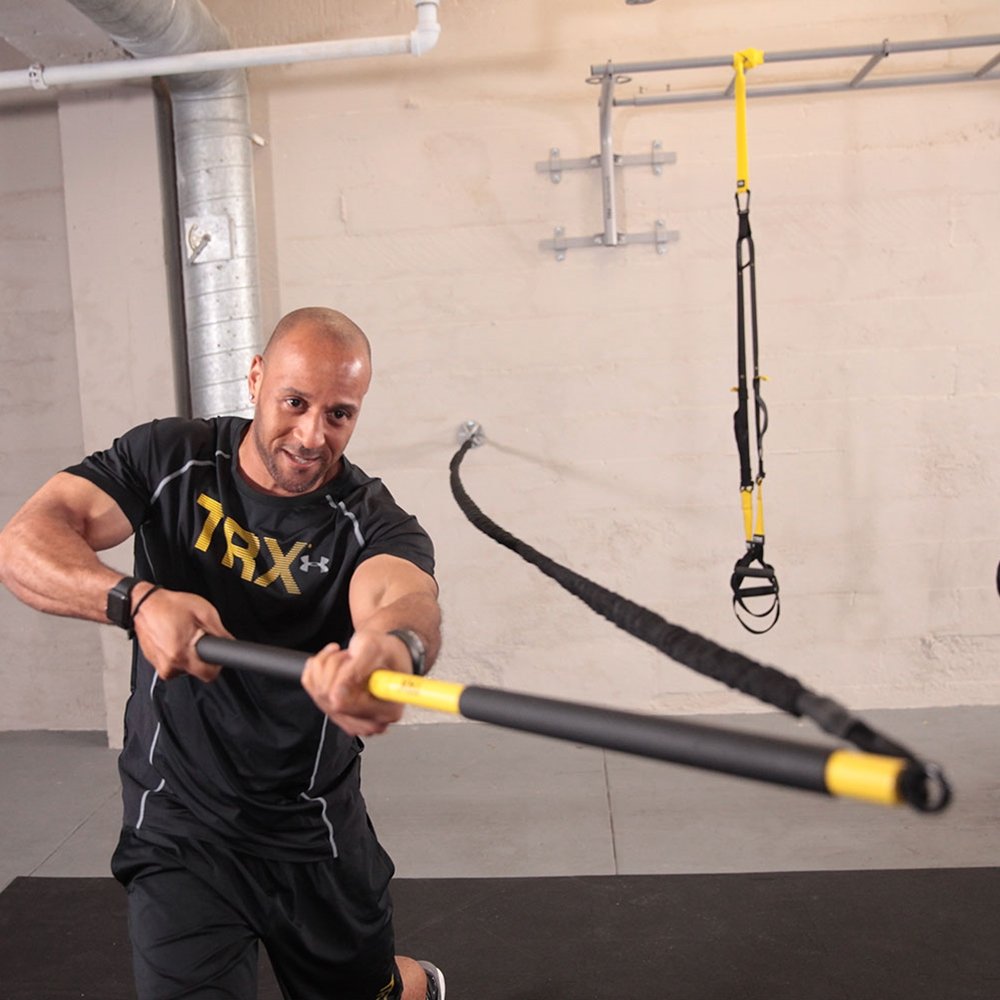
TRX Suspension Trainer vs TRX Rip Trainer
What are the unique benefits of the TRX SUSPENSION TRAINER and the TRX RIP TRAINER? Which should you use for cardio, metabolic conditioning and explosive power, and which should you use for developing total body strength and an impenetrable core? Whether you decide to use them alone or together, these two tools can be the perfect complement for each other. But, before you make the decision, here is all you need to know about our TRX SUSPENSION TRAINER, the TRX RIP TRAINER, and mounting your product using the TRX XMOUNT.
GET IT. MOUNT IT. WORK IT.
TRX SUSPENSION TRAINER
For building total body strength, core stability and mobility, the TRX SUSPENSION TRAINER is ideal. You can load the body and focus on executing controlled movements under high tension in order to develop a strong athletic base to which you can add explosive power. Think of it like building a house: the work you are doing on the TRX are the foundation and framework you are going to build on.
TRX RIP TRAINER
To utilize that foundation for explosive power, metabolic conditioning or a cardiovascular challenge, the TRX RIP TRAINER is the way to go. Want to find the perfect Rip Training exercises for your fitness level? Take our quick assessment quiz to get a personalized plan that develops power and speed.
TAKE OUR TRAINING QUIZ
Because it utilizes elastic resistance, the RIP TRAINER allows you to build speed at the beginning of an exercise, and forces you to control a high tension load at the end range of motion (excellent for speed training). This is different from the TRX SUSPENSION TRAINER, which is all about controlling a high tension load through the full range of motion. Also because the TRX RIP TRAINER provides an asymmetrical load, most movements are going to require a rotational or anti-rotational component.
Many exercises can be performed on both tools. Regardless of the tool, those exercises require core stability for distal mobility, and both challenge stability by incorporating different planes of motion. However, a chest press on the TRX RIP TRAINER becomes an explosive, rotational full body movement, whereas it’s about focused control of a high tension load on the TRX SUSPENSION TRAINER. The choice is yours.
TRX XMOUNT
While both the TRX SUSPENSION TRAINER and the TRX RIP TRAINER are designed with a portable anchor point that can be used anywhere—such as over a door or around a tree or pole—many athletes prefer the increased performance options that come with the permanent TRX XMOUNT. When used overheard with the TRX SUSPENSION TRAINER, the TRX XMOUNT allows you to chase more challenging angles and resistance levels than the standard TRX DOOR ANCHOR. With the TRX RIP TRAINER, the TRX XMOUNT can be mounted on a wall, helping you hone your lateral rotational movements.
When it comes to TRX resistance training, there's no wrong decision: TRX SUSPENSION TRAINER or TRX RIP TRAINER; TRX XMOUNT or TRX DOOR ANCHOR. TRX tools are designed to help you progress your workouts and improve performance.
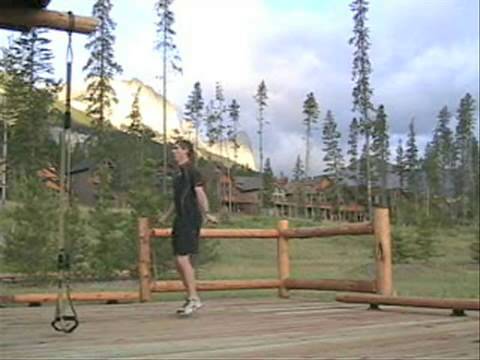
TRX Suspension Training and Jump Rope Fusion Workout
TRX Head of Training & Development Fraser Quelch often combines TRX Suspension Training and Rip Training with other tools to create dynamic, multimodality fusion workouts. In this video get a glimpse at a prototype jumprope and Suspension Training workout he created while developing the workouts for the "Ropes and Straps" DVD series with Buddy Lee.
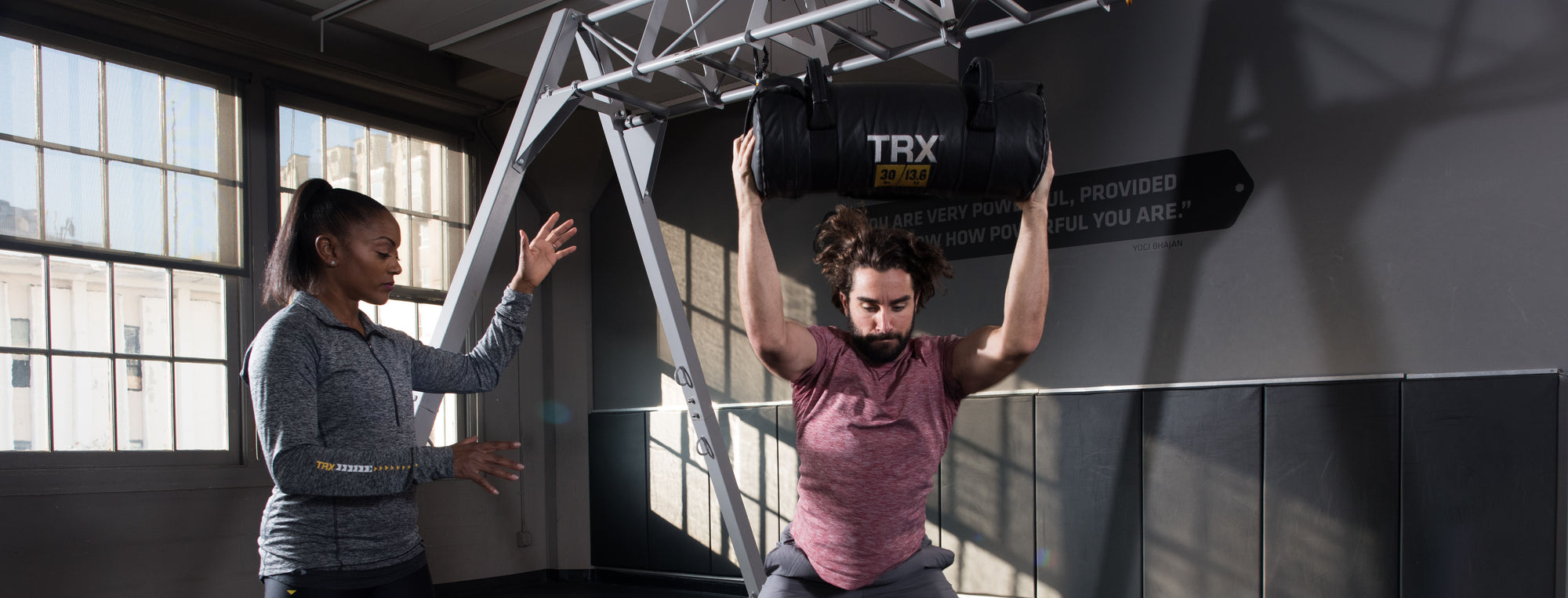
TRX Strap + Power Bag Workout
If you’ve never trained with Power Bags, you’re in for a treat. These cylindrical contraptions deliver smart, intense and powerful workouts that demand mental focus and full-body awareness. In other words, when you pick up one of these bad boys you better be firing on all cylinders (pun intended).
TRX Power Bags can be used on their own as a stand-alone workout or integrated with other functional training tools in a circuit-style training session (for instance in a bootcamp class). They are popular tools for training professional athletes, MMA fighters, and the Armed Services. Aka, they’re badass! Above all, Power Bags are a simple, effective, and fun tool that can be used just about anywhere.
TRX is excited to launch their new line of TRX Power Bags. Featuring a moisture-resistant cover, triple-stitched seams, and shape-retaining foam core, these bags come pre-filled with a fixed-weight (6 sizes from 10 lb - 60lbs) allowing for quick transitions and 7 different handles for easy and comfortable gripping.
Want to find the perfect power bag weight for your fitness level? Take our quick assessment quiz to get personalized equipment recommendations.
TAKE OUR TRAINING QUIZ
Other features include:
Sturdy, moisture-resistant material that’s resistant to tearing, with triple-stitched seams for added durability.
Surface material that wipes clean and won't absorb moisture.
Embroidered weight markers and logo that won’t wear off.
Volume increases as weight increases, enabling any user to find a bag that works for their size and skill level.
TRX STRAP + POWER BAG WORKOUT
ROUND 1:
TRX Squat Row:
Benefit: This exercise will help develop integrated core and upper body strength, as well as hip, ankle and shoulder mobility.
Exercise: Stand facing the Suspension Trainer with your feet facing forward, hip-width apart, holding the handles out in front of you. Brace your core and engage your glutes and hamstrings as though you are performing a plank while standing up.
Drop your hips down and back, while pushing your knees out, bringing your butt as close to your ankles as you can. When you get to the bottom, pull yourself forward with your hands while keeping your feet firmly planted on the ground. Let your weight rock back until you are back at the bottom of your squat position. Then drive your hips forward to return to your standing plank.
Repeat for 40 seconds aiming for 14 - 20 reps. Rest for 20 seconds.
TRX Forward Lunge with Chest Stretch:
Benefit: This exercise will help develop integrated core strength, as well as hip, ankle and shoulder mobility.
Exercise: Stand facing away from your anchor point. Begin with your feet close together, standing tall, arms and elbows straight, with hands reaching out in front of your chest. Take a lunge step forward and reach your arms out to the sides in a 'T' like shape. As you step forward, your back knee will bend, dropping towards the ground. Push off your front leg to return your feet back together, at the same time as bringing your hands together reaching out in front of you.
Repeat for 40 seconds aiming for 14 - 20 reps. Rest for 20 seconds.
Power Bag Mountain Climbers:
Benefit: This exercise will help with working on upper body stability and lower body mobility and conditioning as well as core strength.
Exercise: Place hands on Power Bag with the bag oriented wide holding a plank position with shoulders down and back, glutes engaged and core braced. Picking your right leg up, drive your right knee into your chest while maintaining a strong plank. Bring your right leg back to the starting position and pick your left foot up driving left knee into your chest, still maintaining a strong plank. Return left foot back to starting position and repeat this motion.
Repeat this for 40 seconds completing as many reps as possible. Rest for 20 seconds.
Runners Stretch:
Benefit: This exercise will help mobilize hips and ankles.
Exercise: Assume a plank position with core engaged, feet hip width apart and hands and wrists directly under shoulders. Step your right foot up placing your heel on the ground next to your right hand. Rotate your right arm up towards the ceiling, bring your eyes and head along to look up at your right hand. With an exhale, bring your right forearm as close to the ground as possible and begin to circle your hips working into your right hip. After a few circles going clockwise and counterclockwise, step your right foot back, assuming a plank position. Repeat on the left side.
Continue for 40 seconds aiming for 8-10 reps. Rest for 30 seconds.
Repeat Round 1. Increase the tempo on the first three exercises and allow heart rate to come back down on the final exercise.
ROUND 2:
Power Bag Deadlift:
Benefit: This exercise will help with mobility in the hips, as well as strength in your torso and upper body.
Exercise: Maintain a long spine and long legs, hinge with a slight bend in the knee while keeping back straight. Return to starting position squeezing glutes at the top. Repeat for 60 seconds aiming for 15 - 20 reps. Rest for 30 seconds.
TRX Chest Press:
Benefit: This exercise helps you build upper-body strength while providing an excellent core challenge.
Exercise: With straps fully lengthened, stand facing away from the anchor point with your hands holding the handles out in front of you. Brace your core and focus on holding a solid plank. Lower your chest towards your hands, focusing on moving your entire body together as if in plank position. Stop when your hands are in line with your chest.
Press yourself back up in one slow controlled movement, focus on keeping your knees, hips and shoulders in line the entire way up.
Repeat for 60 seconds aiming for 15 - 20 reps. Rest for 30 seconds.
Power Bag High-Row:
Benefit: This exercise will help build upper body strength in the shoulders, back and arms while stabilizing glutes and hamstrings.
Exercise: Stand straight up with legs hip-width apart and shoulders pulled down and back holding the power bag by the outside grips and resting on the thighs to begin. Put a soft bend in the knees and sit hips back slightly and bracing core. Squeeze shoulder blades up and together, lifting elbows to shoulder level until bag is in front of the chest and making sure there is no arch in the lower back. Slowly lower bag back down, keeping it as close to the body as possible until arms are fully extended.
Repeat for 60 seconds aiming for 15 - 20 reps. Rest for 30 seconds.
Power Bag Side-to-Side Push Up:
Benefit: This exercise will help build upper body strength with an uneven pressing surface to create instability in the press and challenge the typical move while stabilizing core strength.
Exercise: Place power bag vertically on the ground, next to you with the front of the bag lined up with your head assuming a plank position with your right hand on the bag and left hand on the floor. Lower your chest down towards the floor maintaining an active plank. As you push up from the bottom, transfer your left hand onto the bag and your right hand to the floor on the other side of the bag. Maintaining an active plank throughout the movement, begin to lower your chest to the floor to start the next push up.
Repeat this for 60 seconds aiming for 10-20 reps. Rest 30 seconds.
Repeat Round 2. Increase the tempo of each movement. Focus on full range of motion and rest as needed. Rest 1-2 minutes after second round.
For Coaches: To learn more about integrating TRX functional training tools into your workouts, check out our TRX Education courses here.
For Commercial Customers: To learn more about TRX Power Bags, contact your TRX Sales Representative - sales@trxtraining.com | 1-888-878-5348, opt 3.
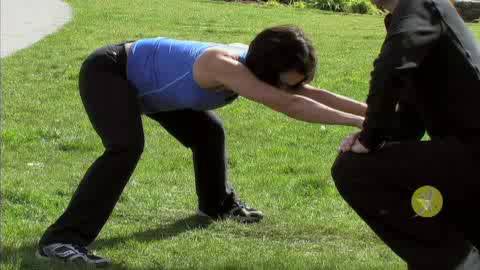
TRX Stretching: Flexibility Matters
If you workout, at some point, you’ve experienced pain due to inflexibility. “Pain is a common denominator that everyone understands. As a preventive measure, stretching will save you a huge amount of time, prevent injury and improve overall conditioning,” says Fraser Quelch.
Indeed, stretching on the TRX as part of a flexibility program can help to diminish many of the aches and pains you commonly experience as a consequence of physical activity.
Building greater flexibility using the TRX also:
Improves circulation
Improves range of motion
Improves posture
Decreases joint stiffness
Decreases muscle tension
Promotes awareness of body in space
Facilitates relaxation
Allows time for mental training, such as visualization
There are many different methods for increasing flexibility, but the TRX is particularly well suited to the task because it’s uniquely capable of facilitating a functional approach to improving flexibility. As this Flexibility Matters series continues, we’ll take a look at what that "functional flexibility" means and why it’s the best approach to improving flexibility. Until then check out the TRX Hip Hinge (Wide Stance) exercise below from our newly released TRX Essentials: Flexibility Program.
Fraser Quelch is Director of Programming and Education for TRX. He is also a featured fitness author and a competitive ironman triathlete.
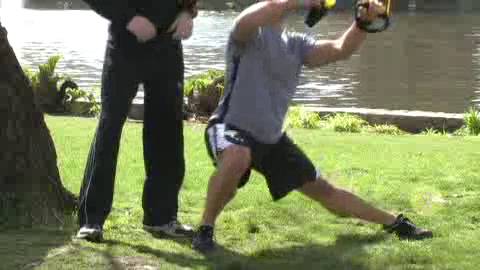
TRX Step Side Lunge
TRX Training
Fraser Quelch and Steve Katai demonstrate the TRX Step Side Lunge, an awesome move for strengthening the glutes, hamstrings, inner thighs and quadriceps.
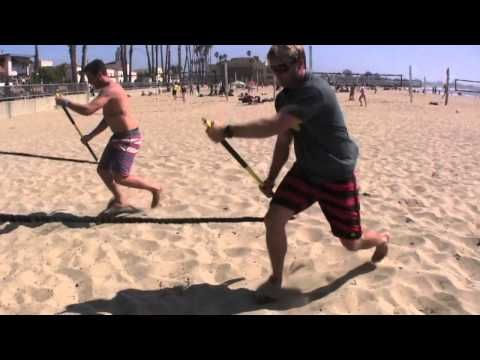
TRX Stand Up Paddleboard Workout
Get ready to conquer the waves this summer with this TRX Stand Up Paddleboard (SUP) workout from the beaches of Santa Cruz, CA. Take our quick assessment quiz for a customized SUP-specific training plan to help you build stability and paddling strength.
TAKE OUR TRAINING QUIZ
In this video, Director of Rip Training Pete Holman pushes PaddleFit founder Brody Welte and professional SUP racer Willis Lindabury Brown through this sand-based Rip Trainer workout. PaddleFit is the No. 1 personal training company for SUP in the world, and Welte says that key fitness components for the sport include a strong core, balance and power. These functional Rip Training movements can help build the foundational muscles needed to make paddleboarders faster, stronger and more durable in the ocean.Get after Holman’s SUP workout with these three Rip Training moves. Perform each movement for 30 seconds with 30 seconds of rest between exercises. Repeat on the other side and perform the circuit three times. INSTRUCTIONS:Rip Paddleboard Row
Stand facing the anchor point in a squat stance. Hold the bar with your back hand palm up and your forward hand palm down.
Squat down and row the bar behind your leg.
Return to the start position and repeat.
Rip Hockey Slap Shot
Stand sideways to the anchor point in a squat stance. Hold the bar with your back hand palm down and your forward hand palm up.
Strike towards the ground by pulling the back hand towards the ribs and pushing the forward hand towards the ground. Pivot on the rear foot so you end up in a split squat stance.
Return to the start position and repeat.
Squat Row
Stand facing the anchor point in a squat stance. Hold the bar with both palms down
Squat down, rowing the bar towards your chest as you elevate.
Repeat.
For another TRX beach workout, check out the Surf Stronger TRX Suspension Training download.
